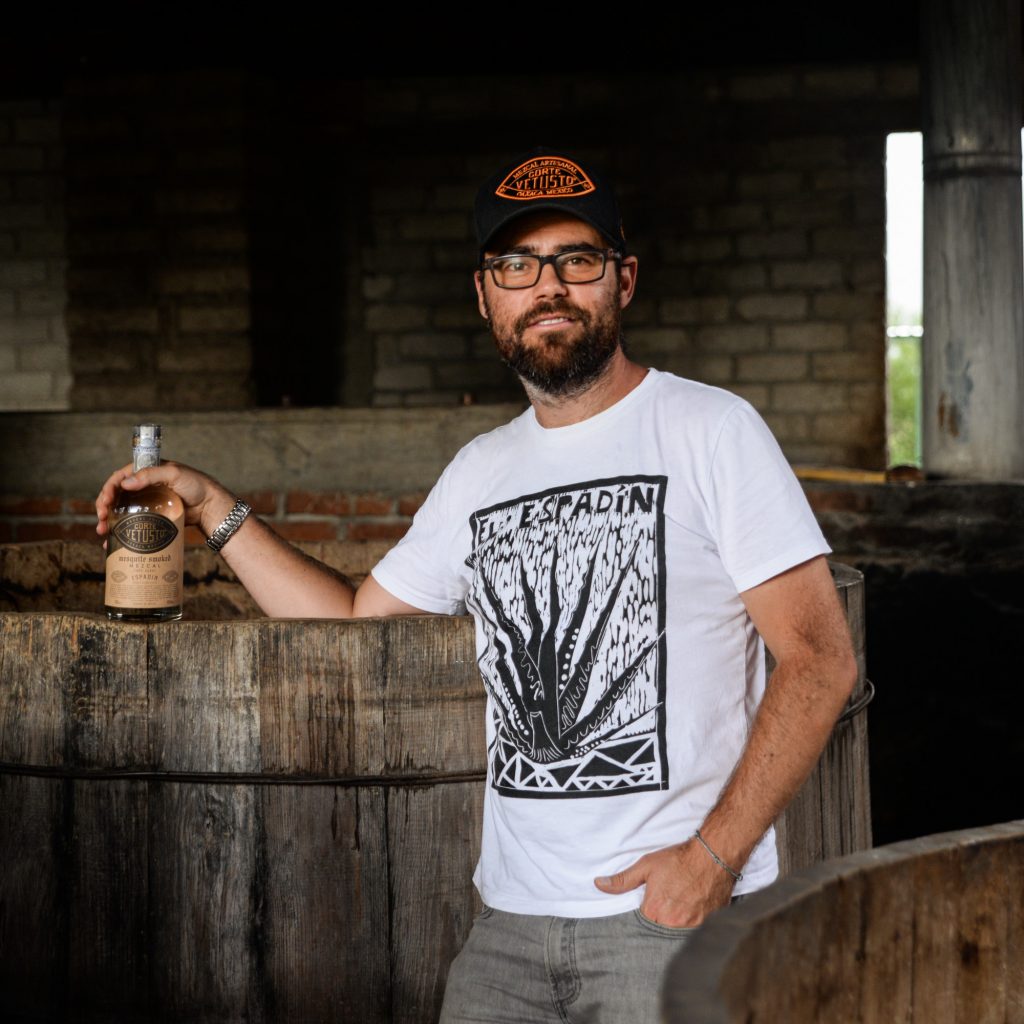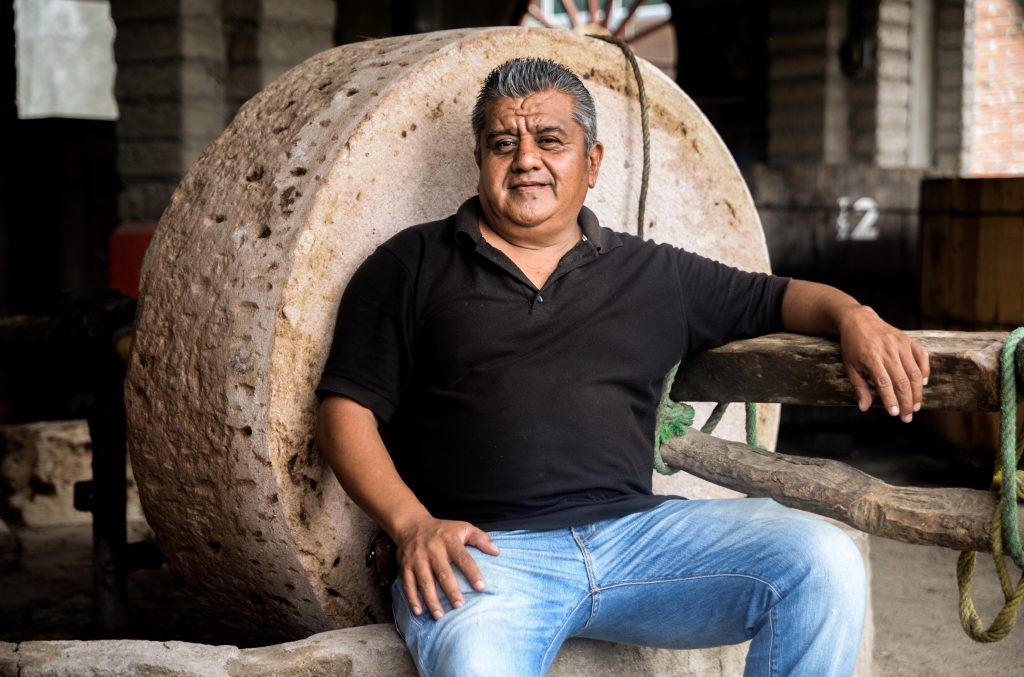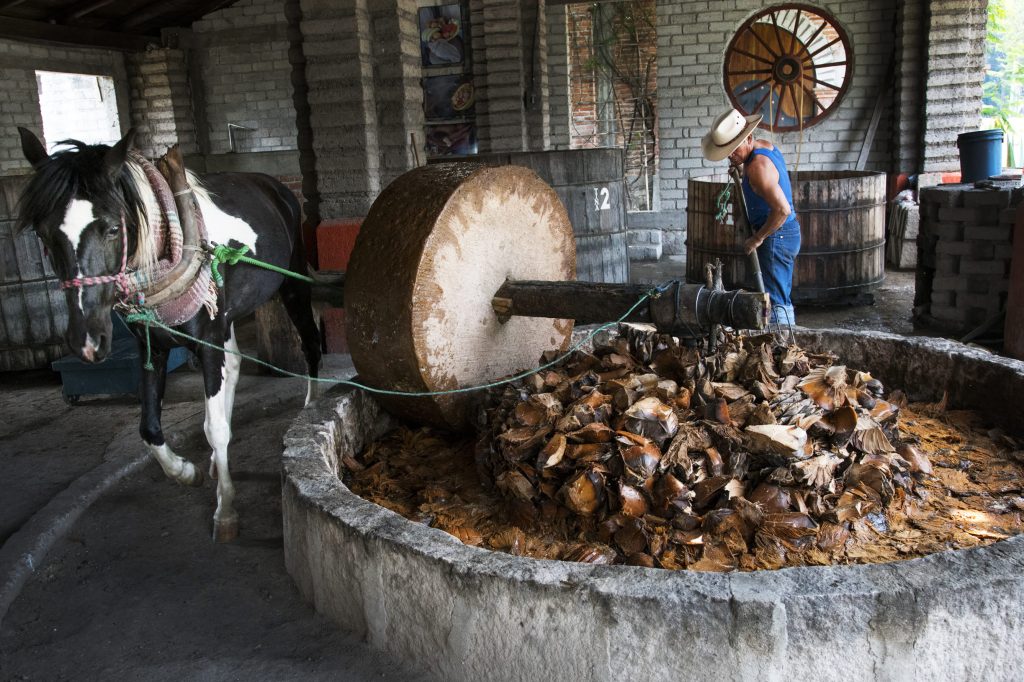Mezcal: Mexico’s authentic spirit
Author: David Shepherd

David Shepherd discovered the allure of Mezcal in a Mexico City restaurant and went on to found Corte Vetusto, his range of Artisanal Mezcals. In his own words, David recalls a recent trip to Oaxaca – and offers his insight into Mexico’s authentic spirit
It’s 7am in Mexico City and the sun is starting to rise. I’ve just boarded my flight to Oaxaca City, having only landed at 4.30am from London. Fifteen minutes later, we’re ascending swiftly over the sprawling capital, lights twinkling as far as I can see.
Flying helps you appreciate how majestic and diverse Mexico is. We fly past two of its volcanoes, Popocatépetl (active) and its twin, Iztaccihuatl, looking resplendent in the soft morning sun. Flat plains, craggy mountains and deep-cut valleys follow. On the approach to Oaxaca City, 50 minutes later, you’ll see pyramids and fields of agave, maize and vegetables. The wheels touch the tarmac. It’s just gone 8am and the warm, humid air hits me as I step out. Today will be hot.
ON THE (OTHER SIDE OF THE) ROAD
Car rental secured, I pause to get my head into driving on the other side of the road. Luckily this is not my first time in Mexico. My first memories are all Mexican: I arrived in Mexico City in 1981 aged six months, and it was home for the next seven years. We then moved to Cape Town and Los Angeles before returning to Mexico. Whilst I finished school in Cape Town, Mexico became my second home from that point. My parents still live there, 35 years and counting.
In 2002, whilst on holiday from my university studies in Scotland, I dined at Restaurante Nicos in Mexico City. The most memorable part of the meal wasn’t the food; it was the Mezcal trolley. I’d never tasted Mezcal before, and it was transformative. It was the best of Islay malts and good Tequila. It was simultaneously familiar and totally new. I was hooked. Fourteen years later I would start my own Mezcal brand, Corte Vetusto (meaning “the ancient cut”).
BREAKFAST IN OAXACA
I head to my usual B&B for a quick shower and some breakfast. Mexicans know how to make breakfast! Traditional Mexican food received UNESCO Intangible Cultural Heritage of Humanity status in 2010. Mexico’s varied microclimates and terrain (green valleys, arid desert, foggy mountains and tropical coasts), along with its strong indigenous identity, ensures that regional culture, tradition and cuisine are well preserved.

This is especially true of Oaxaca, the epicentre of Mezcal production. It has the greatest diversity of agave and accounts for over 85% of all Mezcal production, but don’t think that all Oaxacan Mezcals taste similar. Mezcal is hyper-regional, small-batch and multi-generational. It retains the profound terroir that Tequila has sometimes lost due to the industrial methods used in pursuit of bigger volumes and consistency in flavour profiles.
There are over 150 agave varietals in Mexico, taking between six and 20 years to reach maturity. Approximately 35 of them are used in Mezcal production, the most prolific being Agave angustifolia (Espadín). In contrast, Tequila is made from just one, the Agave tequilana (Blue Agave). Imagine if Tequila was Chardonnay, then Mezcal is every other white grape used to make wine. The flavour spectrum is vast. Blends (ensambles) are also permitted. Historically this is how Mezcal was made, using only agave that was ripe and mature at the time.
THE ARTISAN
I set off to see Maestro Juan Carlos, our exceptional producer, at his palenque (distillery) near Mitla. We start a new batch tomorrow and the agave has been delivered. Like a great winemaker, he knows that making something exceptional starts with selecting the best possible plant. I greet him with a hug. We haven’t seen each other for 18 months due to the pandemic.

Nothing beats being at the source. Traditional Mezcal production awakens every sense: the heat from the fire; the sound of axes splitting agave; the smell of smoke and perfectly roasted agave; and the taste of Mezcal straight off the still. This is a rudimentary setup, a far cry from the gleaming Scotch distilleries I’ve toured, yet true craftsmanship is unfolding here. There is a large pile of mature Espadín, as well as rarer Tobala and Tepextate. We’ll make a batch of Espadín, followed by an ensamble of the three. This is our fourth Ensamble bottling, and each batch is absolutely unique.
MAKING MEZCAL
Mezcal is a beautifully complex and intriguing Mexican spirit. It’s also the oldest spirit in the Americas. The word derives from the indigenous Nahuatl words Metl (agave) and Ixcalli (cooked). A Denomination of Origin (DO) was established in 1994 and now includes nine Mexican states. There are three official classifications: Mezcal, Artisanal Mezcal and Ancestral Mezcal, the differences being how the Mezcal is produced.

Juan Carlos produces Artisanal Mezcal, so our production method involves cooking the agave underground for three to five days, caramelising the sugars and introducing an element of smokiness to the spirit. After cooking, the agave is crushed by a horse-drawn millstone and then fermented, by natural airborne yeasts, in open-topped wooden vats.
The resultant mash is then distilled twice – first with agave fibres, then without – for maximum flavour extraction. He’ll then perform his final piece of artistry: blending the various cuts from his 270-litre copper pot still, without any scientific instruments, to produce a spirit that honours the four generations of Maestros that preceded him. This is as much about respecting tradition as the plant itself. Unlike grapes, which yield a crop annually, agave matures once in its life; we have just one chance to capture its essence.
We endeavour to do just that. With over 13 top awards across the range, we appear to be on the right track. Forty years after arriving in Mexico, my job is to share my passion for Mezcal wherever I go.
Buy Corte Vetusto’s Espadín Joven Mezcal on bbr.com


